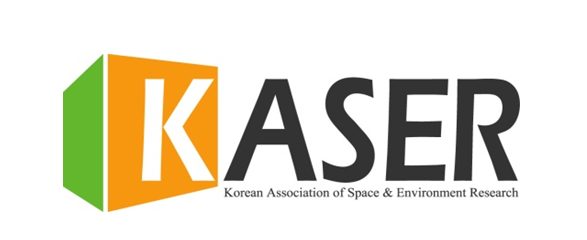ISSN : 1225-6706
Article Contents
- 2024 (Vol.34)
- 2023 (Vol.33)
- 2022 (Vol.32)
- 2021 (Vol.31)
- 2020 (Vol.30)
- 2019 (Vol.29)
- 2018 (Vol.28)
- 2017 (Vol.27)
- 2016 (Vol.26)
- 2015 (Vol.25)
- 2014 (Vol.24)
- 2013 (Vol.23)
- 2012 (Vol.22)
- 2011 (Vol.21)
- 2010 (No.33)
- 2009 (No.31)
- 2008 (No.29)
- 2007 (No.27)
- 2006 (No.26)
- 2005 (No.23)
- 2004 (No.21)
- 2003 (No.19)
- 2002 (No.17)
- 2001 (No.15)
- 2000 (Vol.13)
- 1999 (Vol.11)
- 1998 (Vol.10)
- 1997 (Vol.8)
- 1996 (Vol.7)
- 1995 (Vol.5)
- 1994 (Vol.4)
- 1993 (Vol.3)
- 1992 (Vol.2)
- 1991 (Vol.1)
Realizing the ‘Right to the City’ within the Neo-liberal city: The case of the Haechiman Project
Abstract
The theories and practices of the ‘Right to the City’ have been mainly divided into two claims. One is a legal claim focusing on the institutionalization of the ‘Right to the City’, while the other is a moral claim focusing on the transformation of the existing urban space. Recently, global institutions and city governments have been seeking the institutionalization of the ‘Right to the City’ on a legal claim basis, which can downsize the importance of a moral claim. Through the analysis of the Haechiman project, I problematize the tendency that a legal claim has priority over a moral one since this tendency blocks the possibility of radical reshuffling of the neo-liberal cityscape. Therefore I propose the alternative approach that regards the ‘Right to the City’ as the continuing interaction between a legal claim and a moral claim for the production of the alternative urban space.
- keywords
- 도시에 대한 권리, 신자유주의 도시, 디자인 서울, 해치맨 프로젝트, 소셜 네트워킹 서비스, The Right to the City, Neo-liberal city, Design Seoul Policy, Haechiman Project, Social Networking Service
Reference
강현수. 2009. 「‘도시권’ 개념 및 관련 실천 운동의 흐름」. ≪공간과사회≫, 32호.
강현수. 2010. 「도시공간 누릴 시민권리 빼앗는 대한민국」. ≪한겨레≫, 2010년 3월31일자.
강현수. 2010. 「디자인서울과 해치맨 프로젝트」. ≪연세대학원신문≫, 180호.
김미영. 2010. 「‘디자인 새마을운동’ 하십니까」. ≪한겨레21≫, 805호.
김용창. 2009. 「물리적 도시재개발에서 도시권으로」. ≪창작과비평≫, 2009년 여름호.
서울특별시. 2008. 시정운영 4개년 계획 2006~2019: 맑고 매력 있는 세계도시 서울 .서울특별시.
오세훈. 2007. 「맑고 매력 있는 세계도시 서울」. ≪건축≫, 51권 5호.
조명래. 2006. 개발정치와 녹색진보 . 환경과생명.
황진태. 2007. 「한강르네상스, 도시계획적 문제와 개선 방안」. 한강 르네상스, 한강의 미래인가 파괴인가? 2007년 7월 16일 서울환경연합 주최 토론회자료집.
황진태. 2008. 「거버넌스와 직접민주정치의 이중전략 모색」. ≪진보평론≫, 35호.
황진태. 2010a. 「지역성장연합과 스케일의 정치가 세계도시 서울의 형성과정에 미친 영향: 동대문디자인플라자 & 파크 프로젝트를 사례로」. 서울대학교 석사학위논문.
황진태. 2010b. 「기업가주의적 도시 서울, 그리고 도시권: 데이비드 하비의 논의를 중심으로」. ≪서강대학원신문≫, 112호.
황진태. 2010c. 「신자유주의 시대의 주거공간은 누구를 위한 공간인가?」. ≪연세대학원신문≫, 179호.
황진태. 2010d. 「오세훈은 왜 ‘디자인’에 집착하는가?」. ≪프레시안≫, 2010년 3월 3일자.
Antipode. 2002. “Special issue.” Antipode, 34(3).
Brenner, N., Theodore, N. 2002. “Cities and the Geographies of ‘Actually Existing Neoliberalism’.” Antipode, 34(3), pp.349~379.
Brenner, N., Theodore, N. 2005. “Neoliberalism and the urban condition.” City, 9(1), pp.101~107.
Brenner, N., Marcuse, P., Mayer, M. 2009. “Cities for people, not for profit.” City, 13(2-3), pp.176~184.
City. 2005. “Special issue.” City, 9(1).
City. 2006. “Special issue.” City, 10(3).
City. 2009. “Special issue.” City, 13(2-3).
Evans-Cowley, J. 2010, “Planning in the age of Facebook: the role of social networking in planning processes.” GeoJournal, 75, pp.407~420.
GeoJournal. 2002. “Special issue.” GeoJournal, 58.
Harvey, D. 1989a. The condition of Postmodernity: An Enquiry into the Origins of Cultural Change, Blackwell publishing, Malden.
Harvey, D. 1989b. The Urban Experience, Basil Blackwell, Oxford.
Harvey, D. 1989c. “From Managerialism to Entrepreneurialism: The Transformation in Urban Governance in Late Capitalism.” Geografiska Annaler. Series B, 71(1), pp.3~17.
Harvey, D. 2000. Spaces of Hope. Edinburgh Univ. Press, Edinburgh.
Harvey, D. 2008. “The right to the city.” New Left Review, 53, pp.23~40.
Holston, J. 2001. “Urban citizenship and globalization.” in Scott, A.(ed.), Global City-Regions: Trends, Theory, Policy, Oxford: Oxford University Press.
Lefebvre, H. 1996. Writings on cities, Oxford: Blackwell Publishing.
Marcuse, P. 2009. “From critical unban theory to the right to the city.” City, 13(2-3), pp.185~197.
Mayer, M. 2009. “The ‘Right to the City’ in the context of shifting mottos of urban social movements.” City, 13(2-3), pp.362~374.
McCann, E. 2002. “Space, citizenship, and the right to the city: A brief overview.” GeoJournal, 58(2-3), pp.77~79.
Meagher, S. 2010. “Critical thinking about the Right to the City: Mapping garbage routes.” City, 14(4), pp.427~433.
Purcell, M. 2002. “Excavating Lefebvre: The right to the city and its urban politics of the inhabitant.” GeoJournal, 58(2-3), pp.99~108.
Scharenberg, A., Bader, I. 2009. “Berlin’s waterfront site struggle.” City, 13(2-3), pp.326~335.
서울시정개발연구원 연구원. 2009.10.09.
민성훈(FF그룹). 2010.11.28.
아이라이크서울 홈페이지 ilikeseoul.org
≪주간한국≫ 2010년 6월 10일자. “서울을 시민의 목소리로 디자인하자”
≪한겨레≫ 2010년 5월 20일자. “’디자인 서울’을 다시 디자인하라: 서울-서울시-서울시민의 삼각관계를 고민하는 디자인학도와 디자이너들”
- 127Downloaded
- 149Viewed
- 0KCI Citations
- 0WOS Citations

